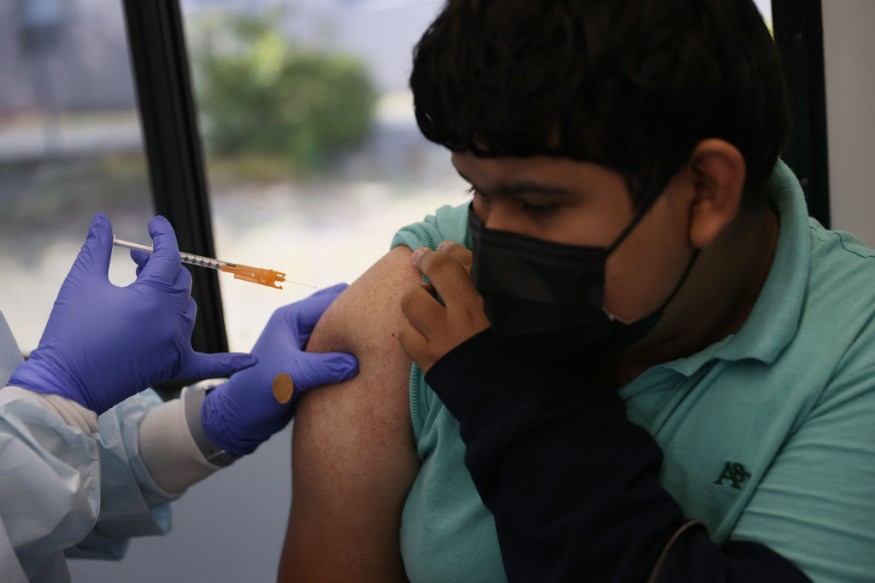Researchers have revealed that a coronavirus epidemic erupted more than 20,000 years ago in East Asia.
Experts suggest that traces of the pandemic can be found in people's genetic makeup from that region.
There have been three significant outbreaks of coronavirus epidemics in the last 20 years.
SARS-CoV caused Severe Acute Respiratory Syndrome (SARS) and killed more than 800 people in China in 2002. MERS-CoV, which caused Middle East Respiratory Syndrome (Mers) and killed more than 850 people. SARS-CoV-2, which caused Covid-19, killed more than 3.8 million people.

However, a new analysis of the human genome's evolution has indicated that a huge coronavirus outbreak occurred thousands of years ago.
"The modern human genome contains evolutionary information tracing back tens of thousands of years, like studying the rings of a tree gives us insight into the conditions it experienced as it grew," study author Prof. Kirill Alexandrov said per Eurekalert.
Prof. Kirill Alexandrov of the CSIRO-QUT Synthetic Biology Alliance and the Centre for Genomics and Personalised Health at Queensland University of Technology is part of a team of researchers from the University of Arizona, the University of California-San Francisco, and the University of Adelaide.
Experts published the research, titled "An Ancient Viral Epidemic Involving Host Coronavirus Interacting Genes More Than 20,000 Years Ago in East Asia," in Current Biology.
History of Genes
Like the rings of a tree, a human's genetic code can convey a story about events in the distant past.
Because of random gene variations, some people are naturally more prone to getting infected by viruses or developing significant disease symptoms than others.
For example, a study titled "The Major Genetic Risk Factor for Severe COVID-19 Is Inherited From Neanderthals" discovered that persons who contain a cluster of genes passed down from Neanderthals 50,000 years ago are more likely to develop severe COVID-19 symptoms.
On the other hand, other mutations have the opposite effect and can help us survive illness epidemics.
These gene mutations also make people more likely to reproduce than others.
"So what happens over several generations is the gene variants that are beneficial will rise in frequency," study co-author Yassine Souilmi, from the University of Adelaide, said per ABC News.
"And that leaves a very distinctive mark several generations later", Souilmi added.
However, it takes at least 500 to 1000 years for this signal of "adaptive markers" to appear in a population's genome, according to Dr. Soulimi.
Reviving An Ancient Coronavirus Outbreak
Researchers examined alterations in human genes coding for SARS-CoV-2 interacting proteins using data from the 1000 Genomes Project, which is the world's biggest public database of common human genetic variation.
They next synthesized both human and SARS-CoV-2 proteins without using living cells and demonstrated that they interacted directly, highlighting the common nature of coronaviruses' cell-invasion process.
The team's computational scientists used evolutionary analysis on the human genetic dataset to find evidence that the ancestors of East Asian people had an epidemic of a coronavirus-induced sickness comparable to Covid-19.
People from East Asia originate in what is now China and Japan, Mongolia, North Korea, Taiwan, and South Korea.
Dr. Soulimi explained that they noticed this adaptation signature and utilized several technologies to determine how far back the adaptation occurred.
Adaptation appears to have begun around 25,000 years ago, according to him.
This is not only the first proof of human exposure to coronaviruses, but it also demonstrates how long they may survive.
According to the researchers, the virus appears to have stopped exerting evolutionary pressure on genomes some 5,000 years ago, implying that the epidemic lasted around 20,000 years.
Dr. Souilmi explained that the researchers cannot tell if this was a seasonal event, like the flu, or if it was a slightly different virus that moved from animals to humans every five to ten years, like SARS, MERS, and SARS-CoV-2 did in the last 20 years.
He believes it was a single virus or a group of viruses that shared the same molecular machinery. It is a theory backed up by recent research, titled "Prisoner of War Dynamics Explains the Time-Dependent Pattern of Substitution Rates in Viruses." The study showed that the viral family that SARS-CoV-2 belongs to first appeared some 23,000 years ago.
In any case, the research shows that humans were exposed to coronaviruses for around 20,000 years at some stage in our evolution.
RELATED ARTICLE : Volunteer for Pfizer's Experimental COVID-19 Vaccine Shares Side Effects from Trial
Check out more news and information on COVID-19 on Science Times.
© 2026 ScienceTimes.com All rights reserved. Do not reproduce without permission. The window to the world of Science Times.











